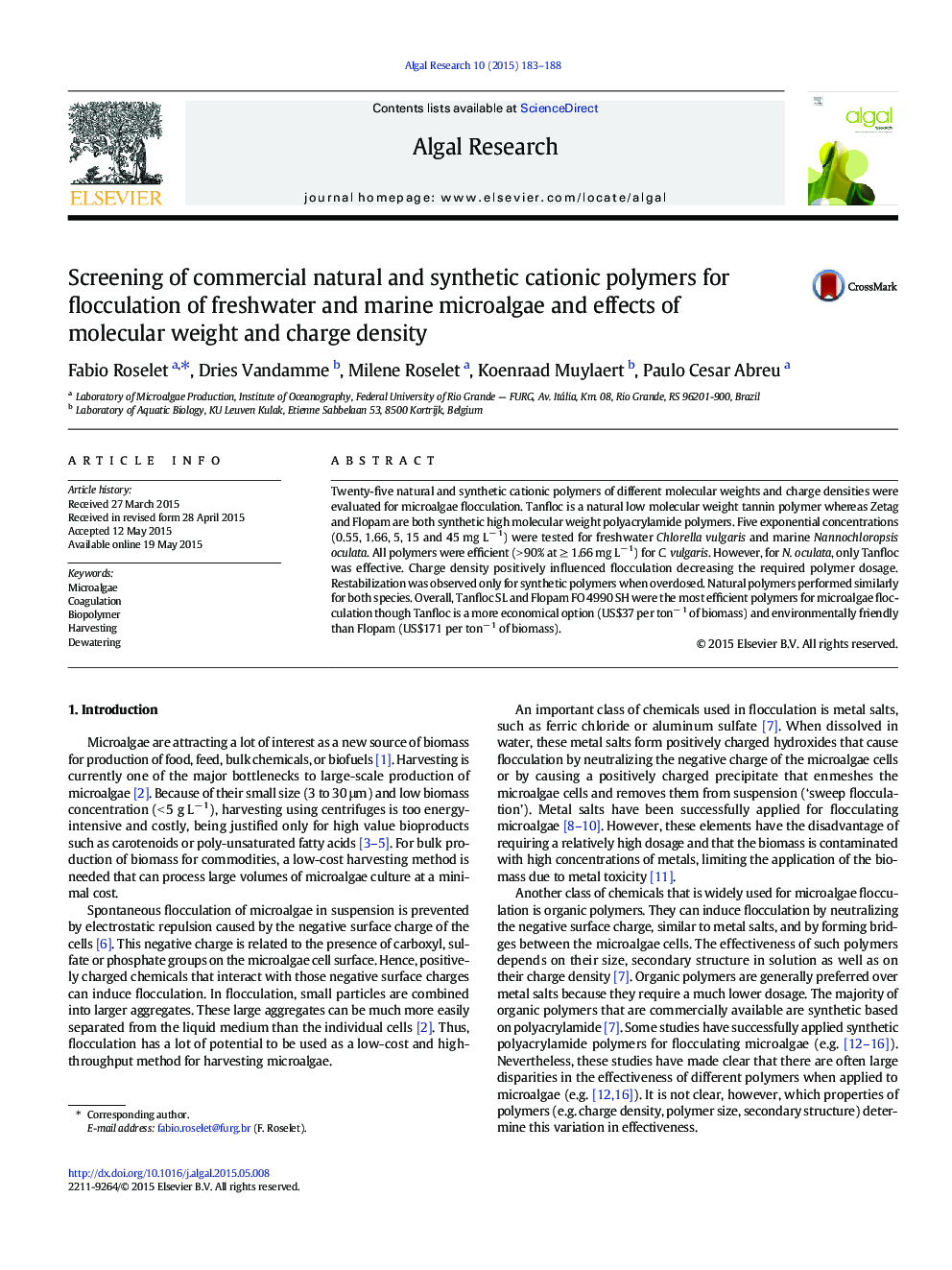| Article ID | Journal | Published Year | Pages | File Type |
|---|---|---|---|---|
| 1742028 | Algal Research | 2015 | 6 Pages |
•Natural and synthetic polymers were efficient for C. vulgaris.•Only natural polymers were efficient for flocculating marine N. oculata.•Increasing charge density decreased the required polymer dosage.•Restabilization was observed only for synthetic polymers when overdosed.
Twenty-five natural and synthetic cationic polymers of different molecular weights and charge densities were evaluated for microalgae flocculation. Tanfloc is a natural low molecular weight tannin polymer whereas Zetag and Flopam are both synthetic high molecular weight polyacrylamide polymers. Five exponential concentrations (0.55, 1.66, 5, 15 and 45 mg L− 1) were tested for freshwater Chlorella vulgaris and marine Nannochloropsis oculata. All polymers were efficient (> 90% at ≥ 1.66 mg L− 1) for C. vulgaris. However, for N. oculata, only Tanfloc was effective. Charge density positively influenced flocculation decreasing the required polymer dosage. Restabilization was observed only for synthetic polymers when overdosed. Natural polymers performed similarly for both species. Overall, Tanfloc SL and Flopam FO 4990 SH were the most efficient polymers for microalgae flocculation though Tanfloc is a more economical option (US$37 per ton− 1 of biomass) and environmentally friendly than Flopam (US$171 per ton− 1 of biomass).
